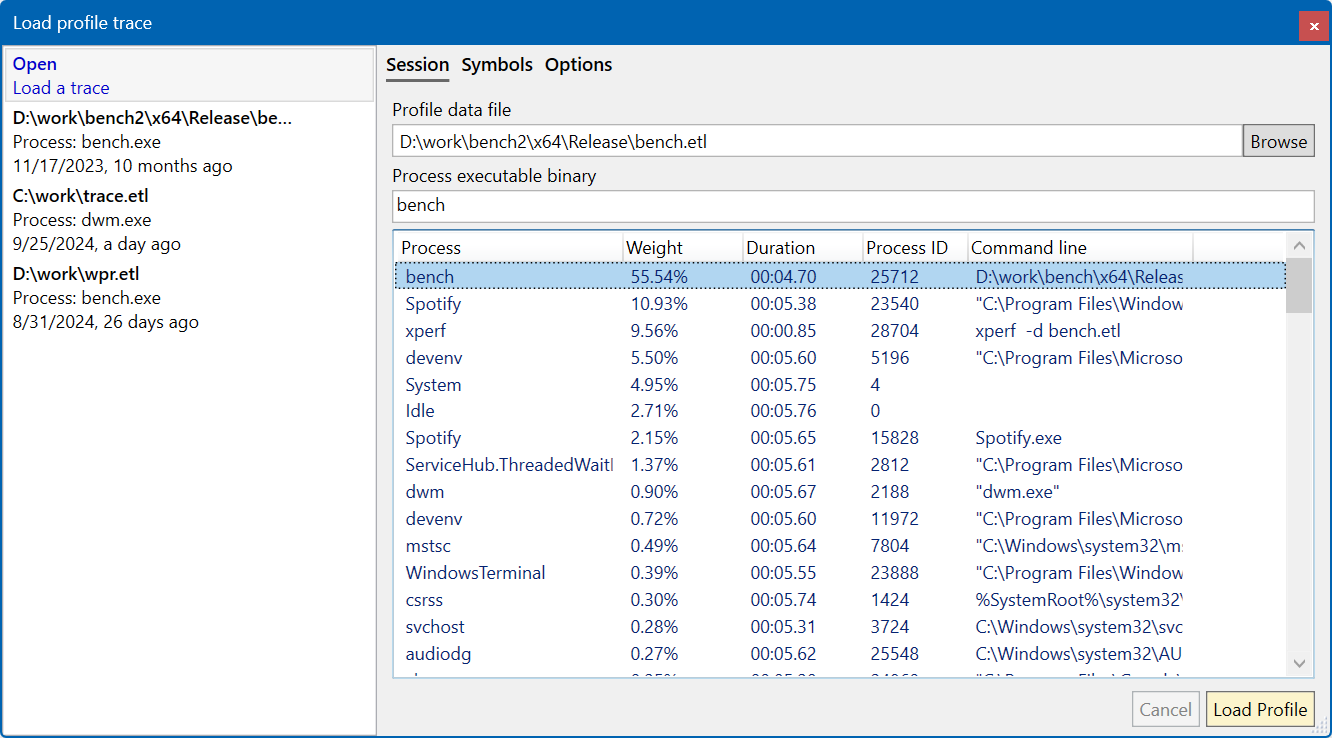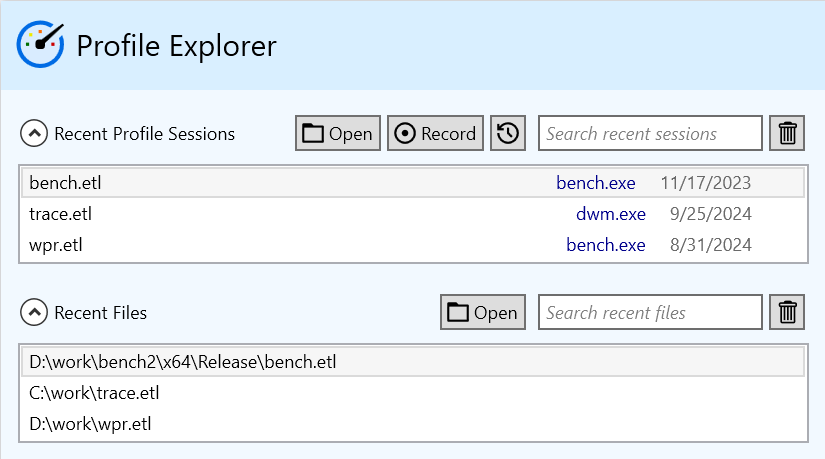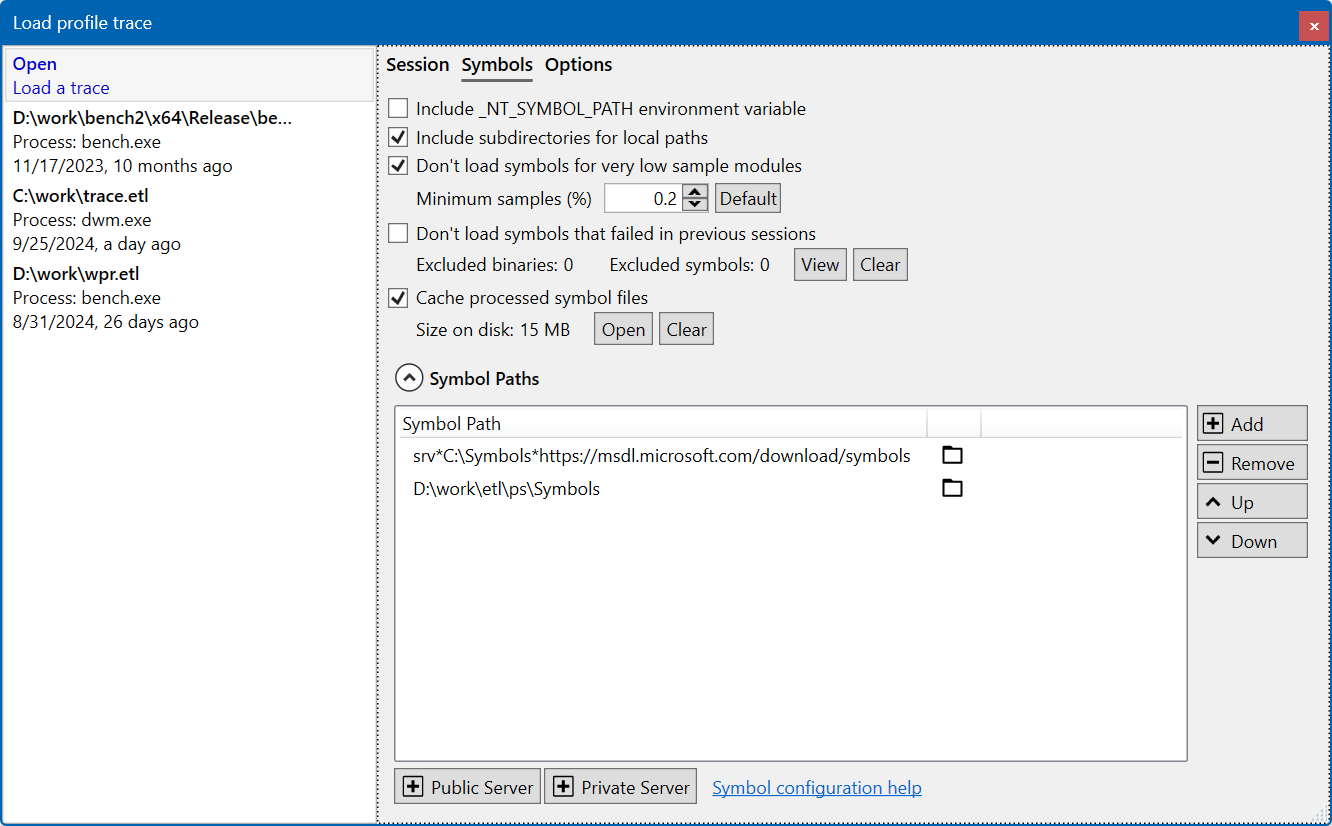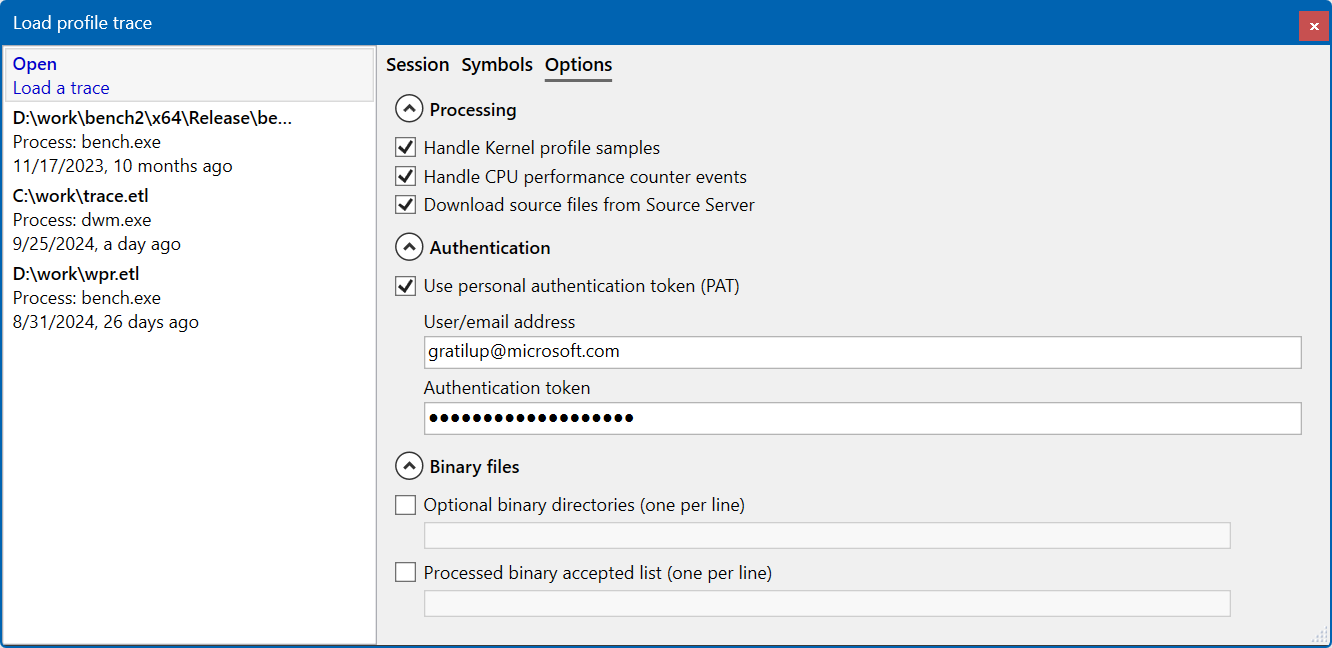Loading a trace
Loading a new trace
There are several ways to open a new ETW trace file (*.etl):
- Use the Open button in the Start Page displayed on startup.
- Use the Profiling -> Load Profile menu.
- Use the Ctrl+O keyboard shortcut.
Once the trace file is selected in the Open File dialog, the Load profile trace window is displayed. It lists the processes (applications) that are captured in the trace, sorted by weight (number of samples).
From the list, select the process you want to analyze and click the Load Profile button (alternatively, double-click or press the Return key).
The selected process is loaded from the trace file, any required binary and symbol files are downloaded and the profiling data is analyzed. Once loading is completed, the window closes and the profiling views are populated, as described in Profiling UI overview.
Note
If the trace fails to load, the Profiling Trace Report windows is automatically opened. The Modules tab lists the modules referenced by the trace and indicates whether the binary and debug info symbols could be found and loaded. See the Profiling Trace report page for more details.
Loading a previously opened trace
Previously opened traces are saved as sessions. Recent sessions can be quickly opened again for the same process using either the Start page or the session list on the left of the Load profile trace window (double-click an entry or press the Return key).
Symbols configuration
Symbols are the binary (EXE/DLL) and debug info (PDB) files required to analyze the processes recorded in a trace. The binaries are used to disassembly individual functions and the debug files are used to resolve function names and provide the source file and line number information.
Symbol paths
Symbols are searched in the locations indicated by the Symbol Paths list, found in the Symbols tab of the Load profile trace window. Symbol locations can be of two types:
- Paths to local directories or network file shares.
- Symbol server URLs. By default, the Microsoft public symbol server is added to the list, with a local download cache directory at C:\Symbols.
Note
More info about symbol servers and the symbol path syntax is available here:
https://learn.microsoft.com/en-us/windows/win32/debug/using-symsrv
Missing debug info symbols
When the debug info symbols (PDB file) for a module cannot be found, the names of the functions used by the app during the trace are replaced by their Relative virtual address (RVA) as a hexadecimal value (127F for example).
You can use the logs from the Trace view report to understand why symbols could not be found, such as using wrong local directory paths or a symbol server being unreachable.
Additional symbol options
| Option | Description |
|---|---|
| Include __NT__SYMBOL__PATH environment variable | Append the environment variable's value to the list of searched symbol paths. |
| Include subdirectories for local paths | Consider symbols in sub-directories up to 3 levels deep for the local directories in the Symbols Paths list. |
| Don't load symbols for very low sample modules | Skip downloading and loading of symbols for modules with a low number of samples. This helps reduce download time for processes with many modules, where the majority have few relevant samples. A module is skipped if it has fewer samples than a threshold. This threshold can be configured using the Minimum samples field as a percentage of the total number of samples. |
| Don't load symbols that failed in previous sessions | Skip downloading and loading of symbols that could not be found in previous sessions (for example, due to offline symbol servers). The list of skipped symbols can be viewed and cleared. |
| Cache processed symbol files | Cache the processed debug symbol files and use them to speed up loading of traces requiring the same symbols. The cache files are saved in the temporary directory and can be viewed and cleared. |
Trace processing options
| Option | Description |
|---|---|
| Handle Kernel profile samples | Include samples executing in the kernel context and connect the call stacks between kernel and user mode code. |
| Handle CPU performance counter samples | Process CPU performance counter (PMC) events and display them in the Summary, Assembly and Source File views using additional columns. |
| Download source files from Source Server | Automatically attempt to download source files from the location indicated by the debug info file. If the download URL requires authentication, it can be configured in the Authentication section found below. |
Authentication
Authentication using an user/email address and Personal Autehnticaion token (PAT) can be configured for both source file servers and symbol servers.
Binary files
Additional local directory paths for searching binary files can be configured. The binary files to process in a trace can be restricted to only the ones in the accepted list.



